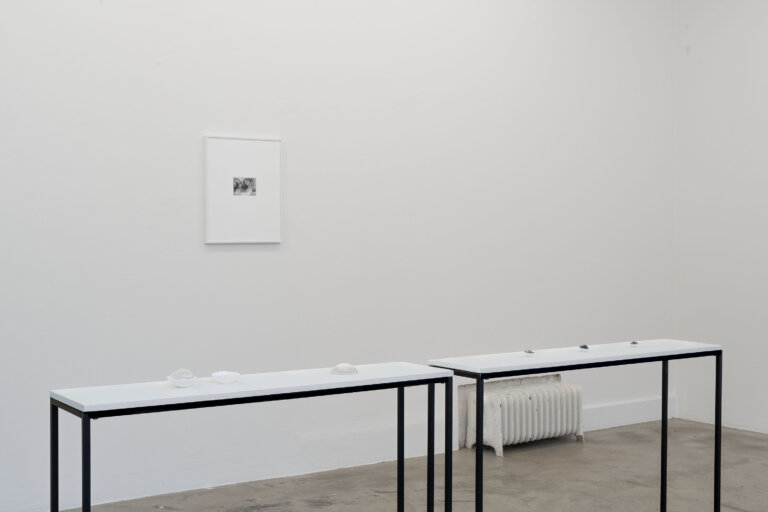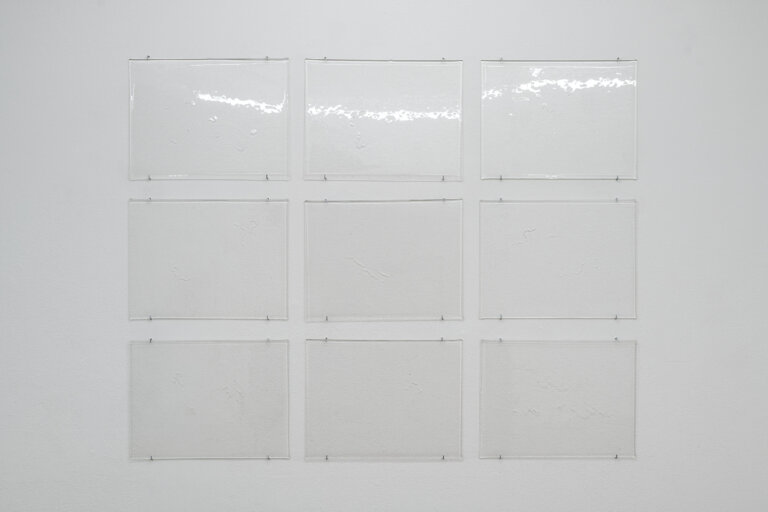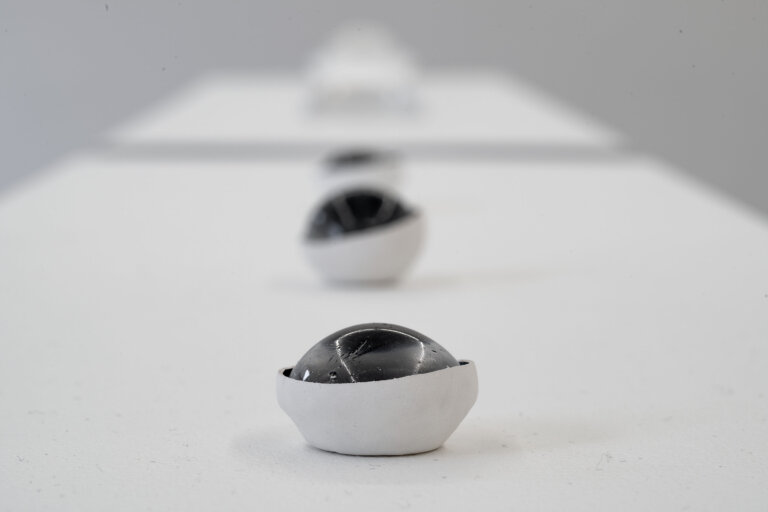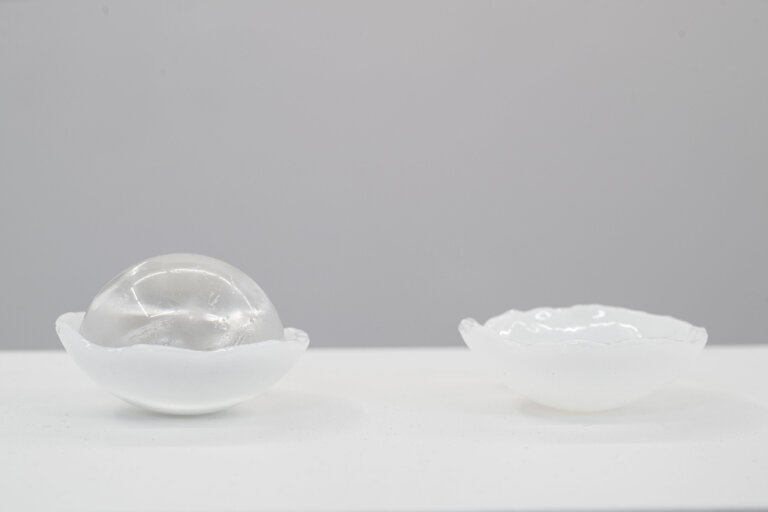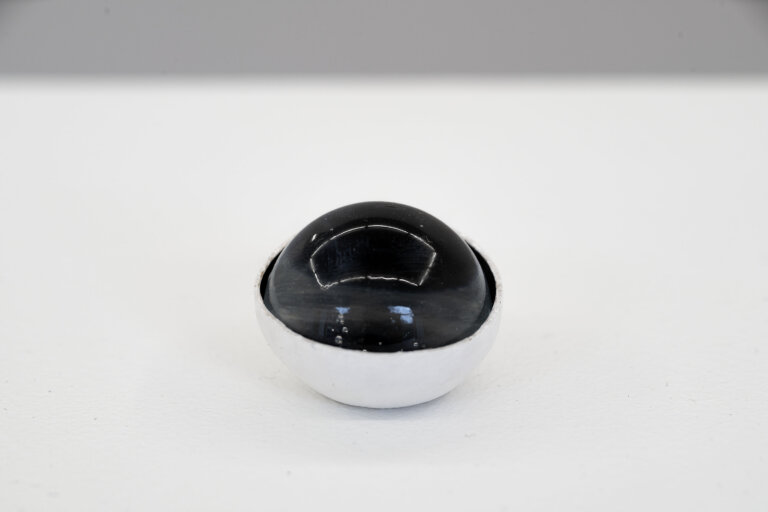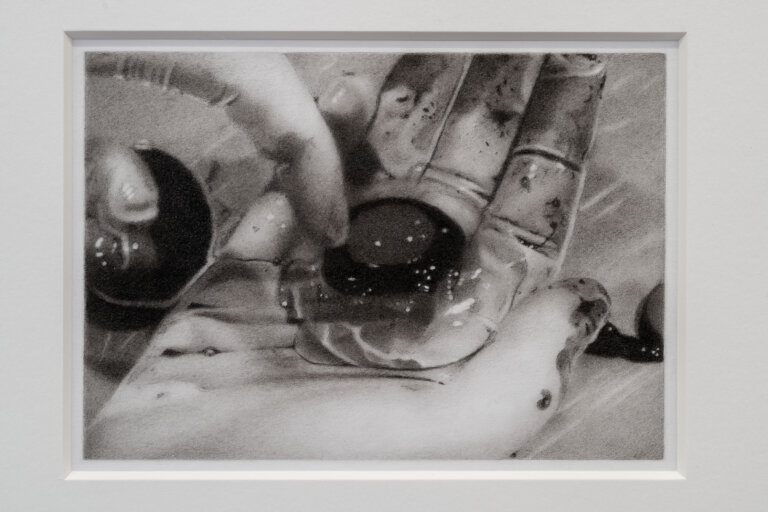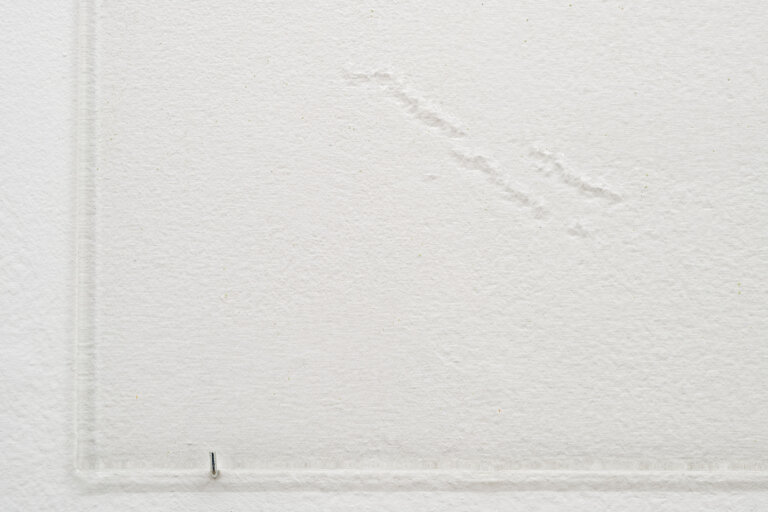When viewing a bright surface, a snow covered landscape or a clear sky, thin lines or shadows can be seen moving slowly in the field of view. These so called floaters, visual traces of the aging eye, and the subjective mediation of the field of vision they give rise to, works as a starting point for the project Vitreous bodies and the exhibition Interpretive drift in which parts of the project are presented.
An early theory about the darker parts of the moon was that they were to be found between the lunar body and the observer, floating in the so-called ether, and in this way obscuring the field of vision. Later, these shadows turned out to be a highly material component of the lunar surface, but maybe the floaters can be seen as a subtle version of this theory. Inside the globe through which we experience and interpret our surroundings, the jelly like mass slowly changes its solidity, the passing of time takes the shape of changes in texture, which in turn leads to visual shadows. A gradual reminder of the various physical layers which exist between the experience of what we perceive, and the outer world.
With a starting point in the field of perception Jenny Åkerlund’s practice revolves around aspects of time and transformation in relation to visual culture. Through the use of disciplines like history of science and astronomy, and with techniques spanning drawing, glass and video, she investigates the impermanent character of the visible in different ways.
Åkerlund (b. 1984) holds an MFA from Malmö Art Academy. Her work has, among other places, been exhibited at Spazio Display, Parma, Kunsthal Charlottenborg, Copenhagen, Goya Curtain, Tokyo, Galerie Thaddaeus Ropac, Pantin, Galleri Tom Christoffersen, Copenhagen, Galerie Jeanroch Dard, Paris and Museum of Contemporary Photography, Chicago.
Hendrik Zeitler

